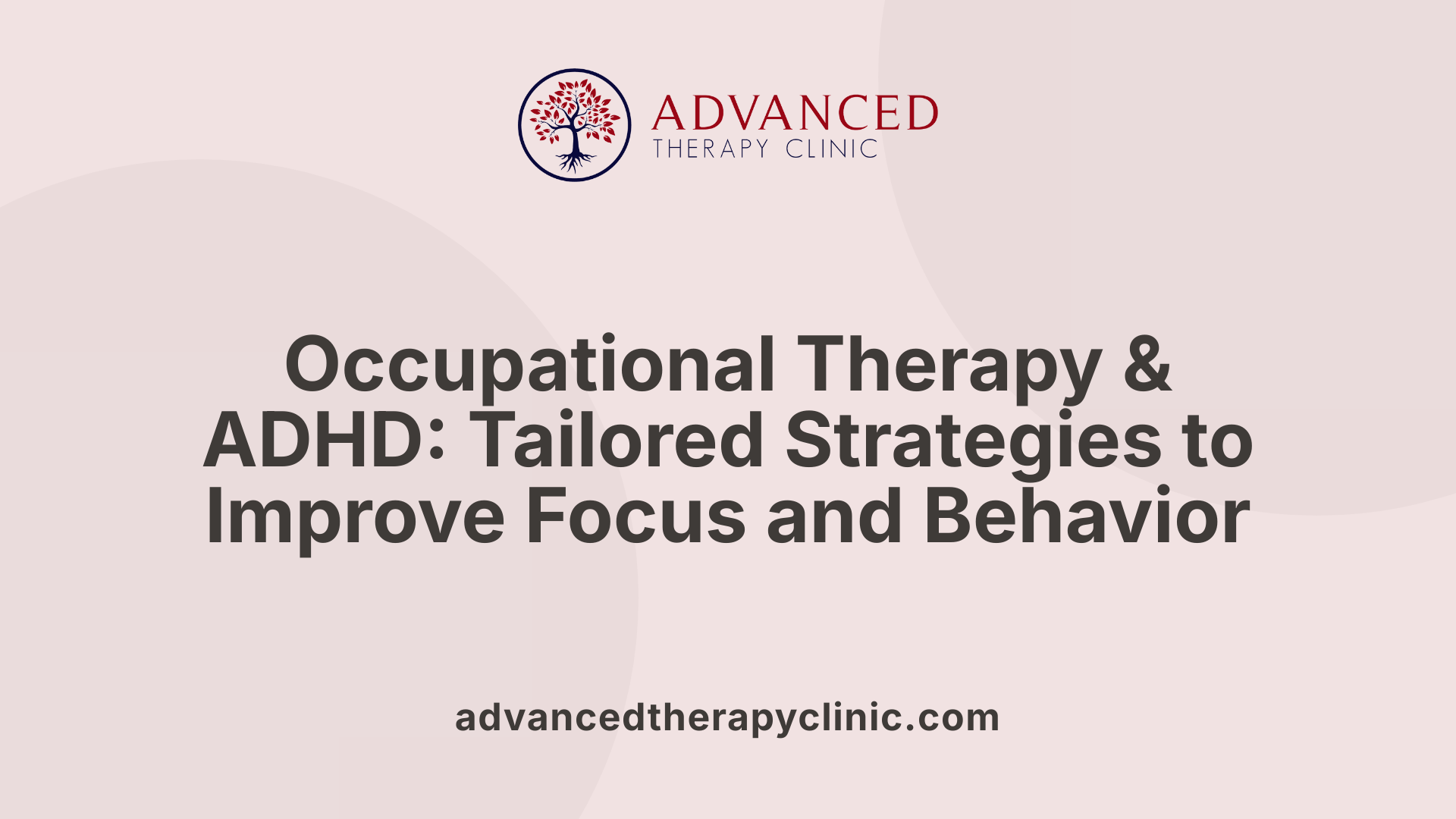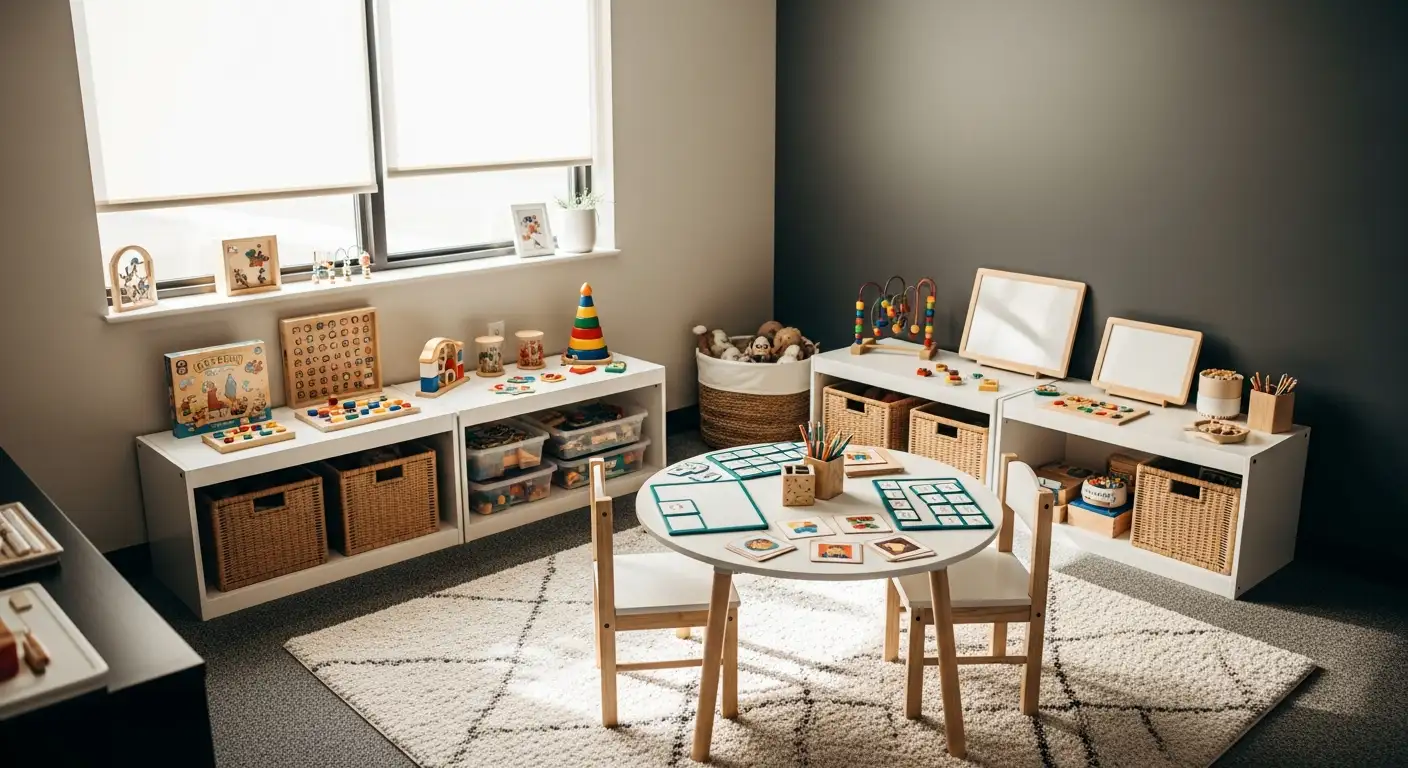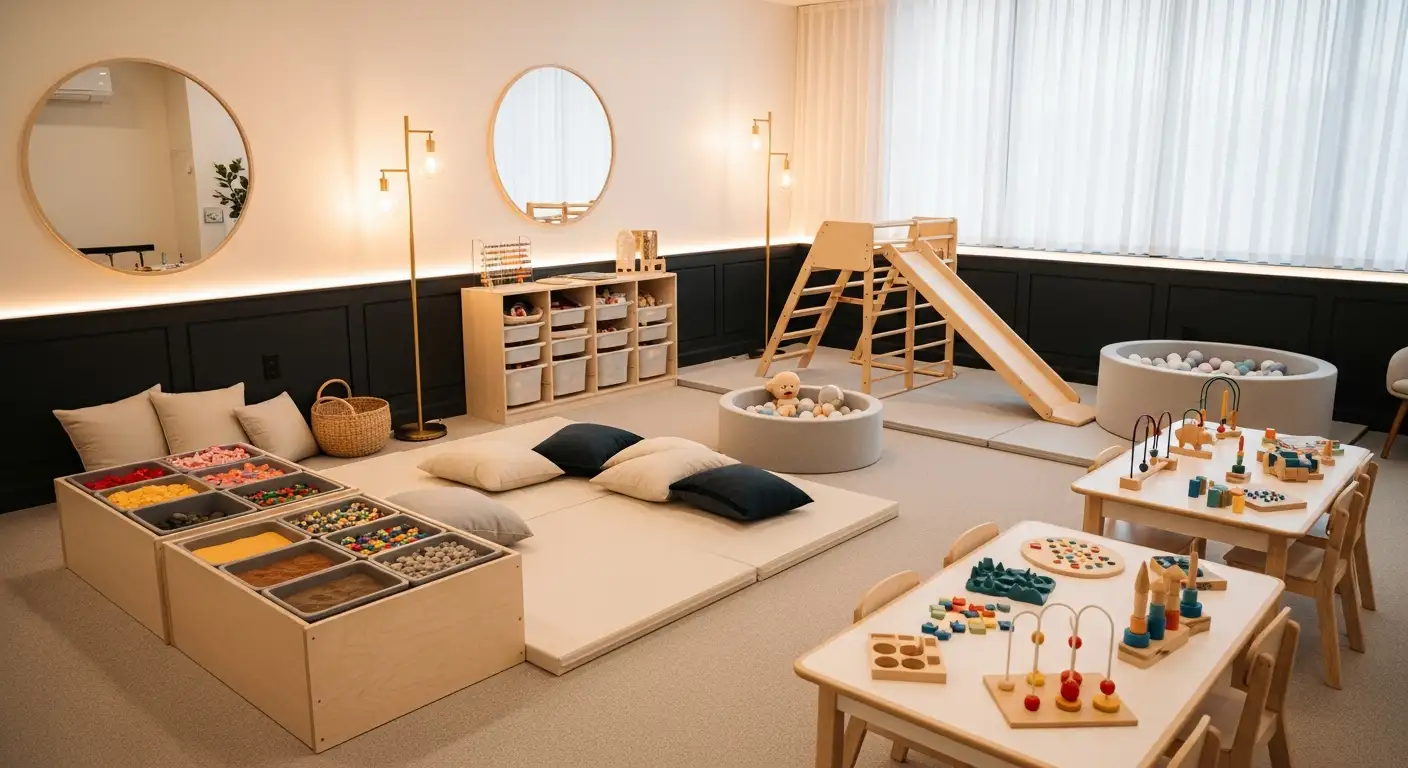The Benefits of Occupational Therapy for Enhancing Attention to Task


Unveiling the Impact of Occupational Therapy on Attention and Daily Functioning
Occupational therapy (OT) plays a pivotal role in empowering children to develop essential skills that foster better attention, focus, and overall participation in daily activities. By targeting foundational cognitive, sensory, and motor skills, OT helps children overcome attention challenges linked to developmental delays, sensory processing issues, ADHD, and other neurodevelopmental conditions. This article explores how tailored OT strategies enhance attention, the approaches used by therapists, and the long-term benefits for children and their families.
Building Core Skills to Improve Focus in Children

What are the foundational skills developed through occupational therapy that enhance children's ability to focus?
Occupational therapy (OT) plays a vital role in helping children build essential skills that improve their attention span and overall engagement in daily activities. The therapy focuses on developing self-regulation, sensory processing, and executive functioning—areas critical for maintaining focus and managing impulses.
Self-regulation involves strategies that help children control their emotions and behaviors, making it easier to stay attentive during tasks. Sensory processing techniques, such as sensory integration activities, help children manage their responses to sensory stimuli, reducing overwhelm and distractions. Executive functioning skills, including planning, organization, and task initiation, are strengthened through targeted exercises that promote better focus and cognitive control.
How does therapy address attention-related issues early in development?
Early intervention is key to addressing attentional challenges before they become more ingrained. Occupational therapists evaluate children to identify difficulties like trouble following directions, frustration, and trouble completing tasks. They then develop personalized intervention plans involving play-based activities, visual aids, and routines to gradually improve focus.
Practicing consistent routines, using visual timers, checklists, and engaging focus-building games helps children learn concentration strategies early on. These interventions not only support immediate improvements but also foster skills for long-term success in school, social settings, and at home. Involving families in therapy ensures that effective strategies are reinforced consistently across different environments.
The broader impact of early OT intervention
By addressing attention issues early, OT helps prevent academic struggles and social difficulties later in life. It promotes independence and confidence as children learn to manage their behaviors and concentrate better. The holistic, tailored approach ensures each child’s unique needs are met, leading to more meaningful and sustainable progress in attention, self-regulation, and daily functioning.
Techniques and Approaches Supporting Attention and Focus

What techniques and approaches does occupational therapy use to support attention and focus?
Occupational therapy incorporates a variety of methods designed to improve attention and concentration in children. One fundamental approach is sensory integration, which helps regulate sensory inputs through activities like proprioceptive exercises (such as jumping or squeezing) and vestibular activities (like swinging or balance exercises). These interventions assist children in better processing sensory information, reducing overload and enhancing focus.
Therapists also employ visual aids to provide clear, consistent cues. Visual schedules, checklists, timers, and routine charts help children stay organized, understand expectations, and manage their time effectively. These tools reduce distractions and foster independence.
Play-based, individualized activities form the core of therapy sessions. Tasks like puzzles, obstacle courses, arts and crafts, and attention-focused games are tailored to each child's developmental level. These engaging activities promote sustained, selective, and divided attention skills while making learning enjoyable.
Environmental modifications are another important aspect. Creating quiet workspaces free of distractions, using sensory-friendly spaces, and establishing structured routines help children stay on task. Additionally, self-regulation techniques such as deep breathing, sensory diets (calming activities tailored to the child), and movement breaks enable children to manage their emotions and impulses effectively.
Together, these approaches aim to develop core self-regulation, cognitive, and motor skills. The goal is to help children engage better in daily activities, whether at home, school, or social settings, leading to improved focus, behavior, and overall development.
The Role of OT in Addressing Attention-Related Challenges

What is the role of occupational therapy in managing attention-related issues such as ADHD?
Occupational therapy (OT) is pivotal in helping children and adults facing attention and focus difficulties, such as those associated with ADHD. It begins with thorough assessments to understand each individual's unique strengths and challenges. Based on this, therapists create personalized treatment plans tailored to specific needs.
OT interventions mainly aim to improve organizational skills, bolster executive functioning, and teach effective impulse control. These improvements foster better attention span and focus in daily activities, including schoolwork, chores, and social interactions.
Therapists use various strategies such as modifying the environment to reduce distractions, incorporating sensory integration techniques to regulate sensory responses, and breaking complex tasks into simpler steps. Additionally, they utilize organizational tools like visual schedules, checklists, timers, and planners to facilitate task management.
Emotional regulation is another critical aspect of occupational therapy. Children learn stress management techniques—like deep pressure, breathing exercises, and mindfulness—that help control emotions and impulses.
Support extends beyond childhood; adults with ADHD also benefit from structured routines, work skill development, and social strategies. These interventions aim to promote independence, reduce problematic behaviors, and enhance overall quality of life.
Ultimately, OT’s holistic approach helps individuals with attention challenges participate actively in everyday activities, improve their social and emotional well-being, and achieve greater personal and academic success.
Impact of Occupational Therapy on Daily Life and Long-term Development
What impact does occupational therapy have on attention, mental functions, and daily life challenges?
Occupational therapy (OT) plays a vital role in improving attention, cognitive abilities, and everyday skills. By using personalized and evidence-based techniques, OT helps children and adults better manage their daily routines. For children, therapy focuses on developing self-regulation, executive functioning, and sensory integration, which are essential for maintaining focus and engagement.
Through activities like obstacle courses, puzzles, arts and crafts, and pretend play, children build foundational skills that enhance their ability to follow directions, control impulses, and complete tasks. Visual tools such as timers, checklists, and structured routines support sustained attention and organized participation.
For individuals with neurological or developmental conditions, such as ADHD, autism, or brain injuries, OT promotes improvements in memory, problem-solving, and emotional regulation. These benefits often persist long after therapy sessions, sometimes lasting a year or more. Families are involved throughout the process, with caregivers learning strategies to reinforce progress at home.
Adults with conditions like dementia or mental health challenges also experience gains from OT. Interventions include memory aids, environmental modifications, and social engagement activities, which enhance independence, reduce cognitive decline, and elevate overall quality of life.
How does occupational therapy benefit across the lifespan?
OT's impact is broad, supporting individuals from childhood through adulthood. In children, therapy improves skills necessary for school success, social interactions, and daily routines. As they grow, continued OT can aid in transition to independence and coping with new developmental demands.
In adults, especially those managing chronic neurological conditions, OT maintains functional abilities, helping with tasks like managing medication, personal care, and employment. For seniors, OT can prevent decline, support mobility, and foster mental stimulation.
Family involvement is integral, with therapists collaborating with caregivers and educators. Home-based strategies—such as environmental adjustments and routine planning—reinforce what is learned during sessions, ensuring skills generalize across settings.
What is the role of family and home strategies?
Families are key partners in occupational therapy. Educating caregivers about effective routines, sensory management, and activity modifications ensures therapy benefits extend beyond clinical settings. Home environments may be adapted with visual supports, sensory tools like weighted blankets, and safe movement spaces to foster a calming and functional space.
Training families in implementing these strategies results in more consistent practice and better outcomes. This holistic approach supports the child's or adult's independence, confidence, and capacity to participate fully in daily life.
How does occupational therapy promote independence, confidence, and quality of life?
Ultimately, OT aims to empower individuals to live more independently and confidently. Whether by improving motor and sensory skills, teaching organizational and time management techniques, or enhancing social and emotional functioning, therapy helps people manage their daily challenges effectively.
Long-term, these improvements lead to a better quality of life, increased self-esteem, and greater participation in social, educational, and work activities. Through customized, family-centered care, occupational therapy nurtures lifelong skills that support personal growth and well-being.
Long-Term Benefits and Empowerment Through Occupational Therapy
Occupational therapy is a comprehensive, adaptable approach that not only helps children develop improved attention, focus, and self-regulation but also strengthens their overall participation in everyday life. By addressing sensory, cognitive, emotional, and motor skills through evidence-based, play-centered strategies, OT provides solutions tailored to each child's unique needs. The collaboration with families and interdisciplinary teams ensures sustainable progress, enhancing academic success, social relationships, and independence. As children grow and face new challenges, ongoing occupational therapy fosters resilience, confidence, and the skills necessary for lifelong success and well-being.
References
- How OT Can Improve Focus and Attention in Kids
- How Pediatric Occupational Therapy Can Improve Attention
- 10 Benefits of Occupational Therapy for Kids
- Use of the Occupational Therapy Task-Oriented Approach to ...
- The Role of Occupational Therapy in Enhancing Daily Life ...
- The Benefits of Occupational Therapy for Children with ...
- Enhancing Mental Functions Through Occupational Therapy
- How OT Can Improve Focus and Attention in Kids
- Types of Attention and Activities for Each Type
Recent articles

Expressive Speech Delay 2-Year-Old
Understanding and Addressing Expressive Speech Delay in Toddlers

How Speech Recognition Works
Unlocking the Power of Speech Recognition in Therapy and Healthcare

Autism and Head Size
Understanding the Complex Relationship Between Autism and Head Size

Occupational Therapy in Autism
Enhancing Independence and Quality of Life Through Occupational Therapy in Autism

Do Autistic People Understand Sarcasm?
Navigating the Nuances: Understanding Sarcasm and Social Communication in Autism

Autism Routines
Crafting Effective Daily Structures for Children with Autism

